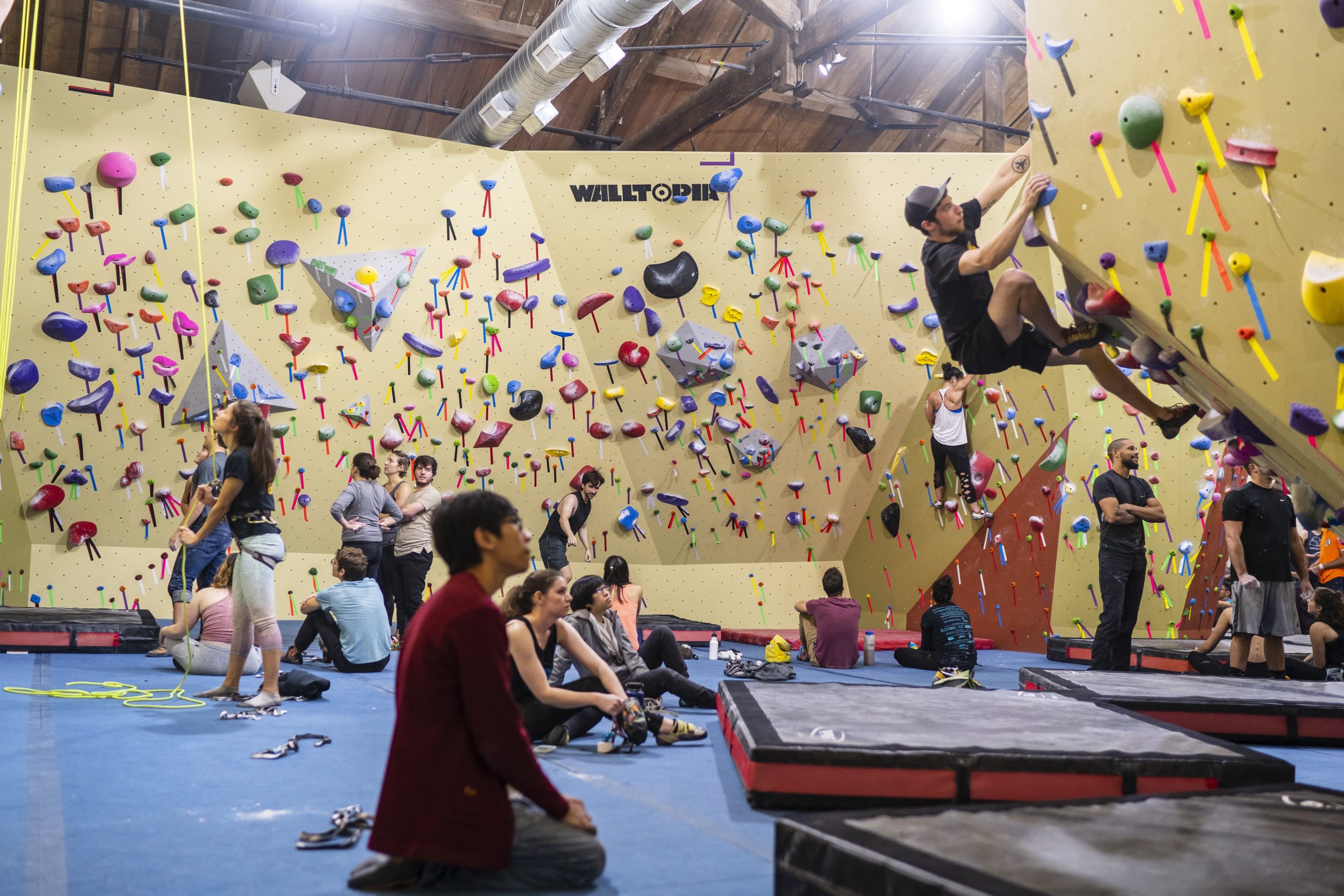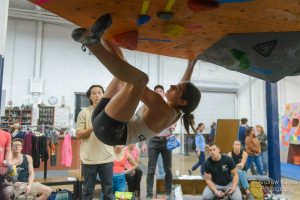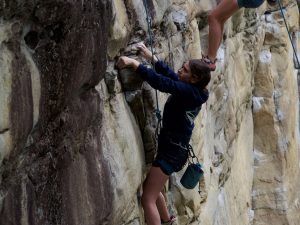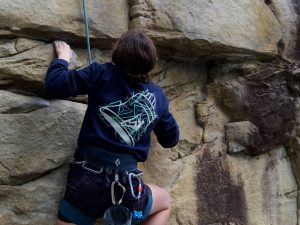What is a Deadpoint?
Deadpoints are the foundation of dynamic climbing. It’s a movement pattern that aims to use momentum, rather than pure strength, to accomplish a move.
The term deadpoint comes from a simple illustration of basic physics. If you take a baseball and throw it up into the air, at a certain point the ball will stop moving upward. It will pause for an instant before gravity pulls it back to the ground. At this point, where the ball has stopped moving upward and has not yet started its descent, the ball has 0 acceleration either upward or downward.
That is the deadpoint.
Relating Deadpointing to Climbing
Let’s relate this idea to climbing. We can replace the baseball with our center of gravity, more specifically, with our hips. Using this idea, a deadpoint is “throwing” our hips up the wall. We use our momentum to carry us upward and grab the next handhold at the deadpoint. We do this when our hips are no longer moving upward or downward.
Why is this helpful? There are two main reasons:
"Resting" Phase
During the first part of the deadpoint, we put the greatest amount of force into getting the move started. We swing our hips onto our heels and drive upward with our legs, almost jumping for the next hold. Once the leg push begins, momentum does the work of carrying us up the wall. This is unlike static movement where we must continuously supply the energy to go up.
As a result, after the initial part of the move, there is a short “resting” phase. Our arms are actually doing little or no work. While short, this resting phase, over the course of a problem or a route, can add up to significantly reduced overall work.
Latching a Hold
At the deadpoint, when for an instant there is no acceleration up or down, we weigh almost nothing. Weight, for those inclined to scientific explanations, is a function of mass and acceleration (from F=ma, weight=mg). So, no downward acceleration means no weight.
This gives a climber an instant to latch a hold in the best possible way before their weight begins to pull down and stress their grip.
Deadpointing Helps Train Speed
The physics lesson concluded, deadpointing is the logical next step in learning to climb more quickly.
As climbs become steeper, deadpoints become the most efficient form of climbing. On the whole, a climber can spend less time on the wall, by moving more quickly. They can also recover some energy from both arms during a move. This cannot be done effectively by climbing statically.
Similiar to a Dyno But Different
The basic approach to a deadpoint is similar to that of a dyno (which we discuss in detail here). The primary difference is that dynos require a slightly more exaggerated motion. Deadpoints have three components that can be roughly broken down along the core principles of climbing technique.
1) Lower Body Efficiency: Position the Push
In a front step deadpoint, climbers will stand on their inside edge. The key to remember is that you only need one foot to do a move. So, the starting position is with your upper foot on a hold, your knee pointing along the wall to the side, and your lower foot either flagged or on an oppositional foothold.
The motion is just like any other move. Shift your hips up and onto the higher foot, and close to the wall. The difference is that this motion is started quickly, typically by pushing off of the oppositional foot.
The goal is to generate momentum and swing the hips onto the upper foot (and into the wall). You then continue to carry that momentum by pushing up on your leg, almost as if you were going to jump off of the foothold.
2) Connecting the Core: Arch Your Back and Flip your Shoulder
Again, just like a static move, the second piece of the puzzle is to arch your back in order to get your hips close to the wall, while keeping your arms as straight as possible.
The added component here is that, toward the top of the move, just as your upward momentum is starting to drop off, you flip the shoulder of your upper arm toward the wall to “throw” your hand at the hold you are reaching for.
3) Upper Body Efficiency: Get Your Arm Out of the Way.
Just as with any other move, the primary focus is to keep your arms as straight as possible for as long as possible. However, the feel of a deadpoint is different than a static move, and the differences are important.
First, keeping your arms straight at the beginning of the move doesn’t just reduce the load on your hands, it also is critical for generating momentum. This is because it is more effective to swing your hips from a straight arm than from one which is bent (having to do with things like angular momentum and tension).
The feel at the beginning of a move is as if you are suspending your hips from your arms and swinging them onto your foot.
The second half of the move is more interesting.
Once your hips are on your foot, to complete the move you will need to bend your lower arm. The interesting part is that, despite the normal belief that bending your arm is done to “pull” you up to the next hold, the primary reason you must bend your arm is to simply get it out of your way.
If you were to try to keep your lower arm straight at this point in the move, you wouldn’t be able to reach very far. In fact, you probably couldn’t in many cases even get into the proper position. Your arm would push you out of it. The reason you don’t need it to pull (very much), is that you are trying to get up the wall using your momentum, as opposed to your upper body strength.
Single Fluid Motion
The key to deadpointing is to remember that, when executed, these steps are combined into a single fluid motion from start to finish, rather than a series of discrete steps done one at a time.
Once the move begins, any pauses (such as to consider the next step) will kill your momentum and rob you of the benefit of the move. Once a climber initiates motion, it should not stop until you have latched the upper hold.
Helpful Tips to Avoid
Avoid starting deadpoints from a bent arm.
Climbers can generate significantly more power when beginning a dynamic move from a straight arm than from a bent one.
Avoid locking off when a deadpoint will work.
Because of the desire for stability, newer climbers frequently choose static moves (i.e. lock offs) over deadpointing as a default. Dynamic movement, however, is generally more efficient and should become the natural approach for climbers. Lock offs should be employed only when precision is necessary.
All material is reprinted with the permission of the author. Copyright 2022 David H. Rowland. All rights reserved.










